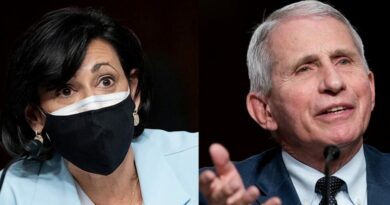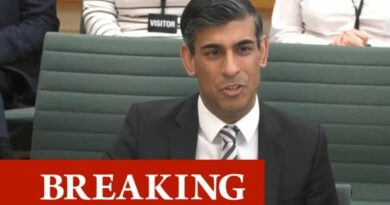No ‘consistent rationale’: Why vaccinations are open to all in some states and not others
WASHINGTON – When Alaska led the nation in offering COVID-19 vaccinations to all adults earlier this month, officials could point to the state’s vaccination pace – the best in the country.
But as a growing number of states have removed eligibility requirements for getting vaccinated, it’s become less clear why some states are acting faster than others.
Mississippi, which eliminated requirements in mid-March, ranks near the bottom in the share of adult residents who have been vaccinated.
In fact, of the 28 states that have either opened up eligibility to all, or will be doing so in the next two weeks, seventeen have below average adult vaccination rates, according to figures available Sunday from the Centers for Disease Control and Prevention. Eleven lag behind other states on fully inoculating those 65 and older, one of the highest-risk groups.
Governors have often cited increasing vaccine supplies as the driver of the decision to remove eligibility limits. But as the number of available doses grows across the country, there’s still a large variance on who can get a vaccine, even as most states are expected to meet President Joe Biden’s goal of making every adult eligible by May 1.
“Where you are in line kind of depends on where you live,” said Jennifer Tolbert, director of state health reform at the Kaiser Family Foundation. “There does not seem to be a consistent rationale.”
Patients are given their first doses of the Pfizer COVID-19 vaccine Saturday on the first day of operations at a mass vaccination site at the Lumen Field Events Center in Seattle, which adjoins the field where the NFL football Seattle Seahawks and the MLS soccer Seattle Sounders play their games. (Photo: Ted S. Warren/AP)
Various explanations for pace, eligibility for vaccines
Experts say reasons for the differences include how confident governors are in the increased projections of doses, demographic differences among states and whether states have had trouble filling vaccination appointment slots. The latter could be a reflection of how easy states have made it to get vaccinated. It could also mean residents have been less interested in getting shots.
“Some states may be experiencing vaccine hesitancy sooner than other states,” said James Blumenstock, senior vice president of pandemic response and recovery for the Association of State and Territorial Health Officials. “And, therefore, that means they’ve got to sort of open up the gate to allow other categories in just so that precious time is not lost.”
Officials are particularly concerned about avoiding unclaimed appointments as more contagious COVID-19 variants spread.
“We really want to get to that goal of getting as many people vaccinated as possible, as quickly as possible, especially with variants,” said Hemi Tewarson, an expert at the Duke-Margolis Center for Health Policy who has been closely following states’ efforts.
Concerned about a “possible trend” of increasing infection and hospitalization rates, Illinois Gov. J.B. Pritzker on Friday gave local health officials permission to make the vaccine available to anyone who wants it if demand in an area has waned.
“Each county is different and local health departments know better how to vaccinate people in their communities as soon as and as equitably as possible,” Dr. Ngozi Ezike, director of the Illinois Department of Public Health, said in a statement.
Some states have kept the focus on moving systemically through the vaccination priority levels recommended by the CDC.
“As it relates to other states, you know, we’re taking the approach we’re taking,” New Jersey Gov. Phil Murphy said last week. Garden State residents under 65 still aren’t eligible unless they have certain high-risk medical conditions or hold certain jobs. “We’re trying to as methodically and doggedly get to as good a place as we can.”
Trish Riley, executive director of the National Academy for State Health Policy, said some states have put a greater focus on assuring that vaccines go to those most of need, and most at risk.
“And other states think that, you know, throw the doors open and let’s get everybody in and get as many shots as possible,” Riley said. “They’re just different approaches to the same problem.”
Patricia Warnock, 76, of San Rafael, CA receives a Moderna COVID vaccine at a mass vaccination site at City College of San Francisco on Friday, January 22, 2021. (Photo: Martin Klimek for USA TODAY)
Equity shouldn’t get left behind
But Riley and other experts say there’s a concern that faster moving states don’t let up on making sure the most vulnerable are vaccinated.
“The equity story isn’t over with vaccines for all,” said bioethicist Harald Schmidt at the University of Pennsylvania. “By simply saying, ‘Oh, you know, we’ve opened for all and now come and get it,’ that can’t be good enough, neither for equity, nor for public health.”
Different approaches have been a hallmark of the vaccination rollout that began under the Trump administration, which left many decisions up to states.
The CDC guidance on how to prioritize populations was helpful, Riley said, but still posed challenging questions for states on how, for example, to define an essential worker. Should hospital billing clerks share the same top priority as nurses and doctors? Is a waiter less essential than a hotel clerk?
Some decided it was simpler to vaccinate strictly by age, after inoculating health care workers and nursing home residents.
That includes Connecticut, which switched to an age-based approach in March and plans to open up vaccinations to all adults by April 5.
When Alaska made vaccines available to everyone 16 and older, they knew they didn’t have enough vaccines for all, said Tewarson. But simplifying eligibility made messaging and distribution easier.
“It took away some of the process and effort they were putting into trying to tier the different populations and prioritize,” Tewarson said.
Nearly three in ten adult Alaskans have been fully vaccinated, one of the highest rates in the nation. About six in 10 Alaskans age 65 and older are vaccinated, which is also one of the best rates for that high priority group.
COVID-19 vaccine near me: Digital tools to help you find vaccination locations
‘I’ve missed you so much’: Now vaccinated, grandparents are reuniting with their families
Medical assistant Keona Shepard prepares a dose of the Johnson & Johnson COVID-19 vaccine on Thursday at a mass vaccination clinic at the New Orleans Ernest N. Morial Convention Center. (Photo: Chris Granger /The Advocate via AP)
No definitive rules
Federal guidance does not specify what share of a priority tier should be vaccinated before moving on to the next tier. The suggested factors to consider include when appointments are less than 80% filled for several days, when vaccine doses substantially increase, when a state’s target vaccination rate for a group has been met and when doses in certain areas are at risk of going unused.
The measure of progress by priority tier that is most easily comparable from public data is the vaccination rates for senior citizens. Seniors account for 80% of COVID-19 deaths.
If states are already vaccinating this group at a lower rate, it suggests there might be barriers – such as the ease of making, and getting to, vaccination appointments – that should be addressed first, said Tolbert. Those barriers may also exist for other high-risk or hard-to-reach populations, including the poor, minorities and people in rural areas.
“We could see some of those equity issues get worse if there’s not a concerted effort to continue to ensure that, as they begin to vaccinate more and more people, the states are also focusing on outreach and other efforts to ensure that there is a more equitable administration of the vaccine,” she said.
Missouri, which has one of the lowest rates of vaccinations for both seniors and all adults, is behind both because of poor public health infrastructure and because the state disproportionally allocated vaccines to rural areas over cities, said Dr. Sarah George, an infectious disease specialist at Saint Louis University.
With infections on the rise, George wants everyone to get vaccinated as soon as possible. But she hopes the state’s decision to make all adults eligible on April 9 won’t take away from catching up on vaccinating high-priority groups.
“I would like us to do both,” she said.
Asked if it’s a mistake for states that are behind in vaccinating seniors to expand eligibility to all adults, Jeff Zients, the coordinator of the White House’s coronavirus task force, reiterated Biden’s goal of opening up vaccinations to the general public by the end of April.
“But we have to keep prioritizing the most vulnerable populations,” he said. “And if there are states that are lagging behind, we’re working with those states.”
Contributing: Scott Fallon of The Record in Bergen County, New Jersey.
Source: Read Full Article





